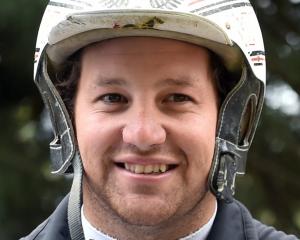The New Zealand thoroughbred industry took one of its first official steps towards major rationalisation of its racetracks yesterday.
New Zealand Thoroughbred Racing (NZTR) released what it called phase one of its final venue plan.
The short story, for southern racing participants, was that the Waimate, Winton and Wyndham thoroughbred clubs will not race at their home courses next season.
Hardly shocking stuff, really.
Some might say it is reasonably sensible.
Especially after the shock the Messara report delivered when it raised the issue of rationalisation.
Wyndham had already relocated to Gore in recent seasons, and the move seems to have been a success.
The Waimate club had been forced off its course by the destruction of its grandstand, and had held race meetings at Oamaru in recent seasons.
Their return home looks to have been a very brief one.
NZTR said in its report it did not receive a submission from the Waimate club on the proposal for it to move.
It also noted that a submission from the Oamaru club that the Waimate club supported racing at Oamaru.
Things get a lot trickier south of the Otago-Southland border.
The Winton club submitted a detailed submission including why it is opposed to the suggestion of moving from its home track and racing at Gore.
NZTR were obviously not captivated by any of the reasoning in it.
I have spoken with Winton officials, and they told me a range of reasons why they resisted the change.
It would be fair to say I thought some of their reasoning deserved attention.
Winton officials told me that if the Winton course closed for thoroughbred training, most of its local veteran trainers would simply retire.
NZTR's report said in its report it understood the Winton track would still be able to be used as a thoroughbred training centre, despite it closing for racing.
Any course in New Zealand that is used every day for training is going to cost a sizeable amount of money to upkeep each year.
I would like to know what the difference between the upkeep of the same track used only for training and used for both racing and training would be.
There looked to be three possible outcomes for the Winton track until yesterday's announcement.
One, Winton is abandoned as a thoroughbred training and racing facility.
The industry would save on course costs, but according to the clubs, will lose local trainers, owners and horses.
Two, the course could close for racing, but remain open for training.
The industry would save on the upkeep of the racing surface, retain local horse, owners and trainers, but still pay for the upkeep of the training circuit.
The status quo is the third option.
Local racing, training and ownership is retained at the cost of maintaining the Winton thoroughbred track.
These three outcomes heavily rely on the venue continuing as a harness racing track.
Obviously if the cost of the amenities away from the galloping track solely fell on the Winton Jockey Club, there would be little choice but to close the venue.
This leads me to two major points.
Despite their businesses being intricately linked, national thoroughbred and harness racing authorities seem to be doing little to work together on their future venues.
I think any venue that hosts both codes should be the focus of scrutiny from both codes.
That scrutiny should include quantified facts and figures; not necessarily down to the last cent, but something detailed.
There were figures in the report outlining declines in thoroughbred racing.
They were used to support the idea that the industry needed change, and that consolidation of tracks was one way to improve it.
However, there is no specific data on what can be saved by closing venues for racing.
The NZTR report suggests it supports Winton closing for racing, but remaining open for training.
My question is: how much money will that actually save?
Happy trails












